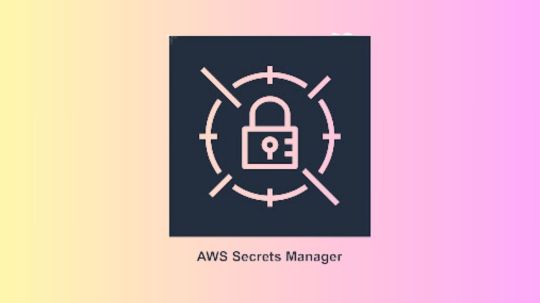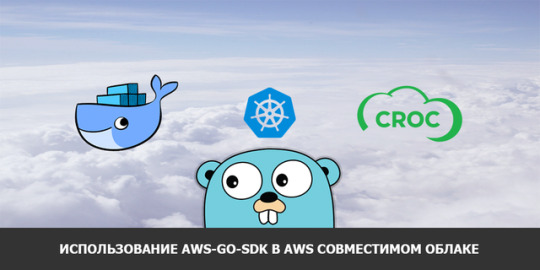#AWSSecret
Explore tagged Tumblr posts
Text
AWS Secret Manager Cost, Access Control And Authentication

Access control and authentication for AWS Secret Manager
AWS Identity and Access Management (IAM) is used by Secrets Manager to protect secret access. Access control and authentication are offered by IAM. Authentication confirms the legitimacy of people’s requests. Multi-factor authentication (MFA) tokens, access keys, and passwords are used in Secrets Manager’s sign-in procedure to confirm users’ identities. Look logging into AWS. Only authorized users are able to access AWS resources, including secrets, thanks to access control. Policies are used by Secrets Manager to specify who can access what resources and what actions an identity can do on them. View IAM’s policies and permissions.
Reference to AWS Secret Manager permissions
The Secrets Manager permissions reference may be found in the Service Authorization Reference under Actions, resources, and condition keys for AWS Secrets Manager.
Administrator permissions for Secrets Manager
Attach the following policies and complete the steps at Adding and deleting IAM identity permissions to provide AWS Secret Manager administrator permissions:
SecretsManagerReadWrite
IAMFullAccess
AWS advises against giving end users administrator privileges. The permission needed to enable rotation (IAMFullAccess) gives substantial access that are inappropriate for end users, even while this lets your users generate and manage own secrets.
Lambda rotation function permissions
Secrets Manager rotates secrets using AWS Lambda functions. Both the secret and the database or service for which the secret includes login credentials must be accessible to the Lambda function.
Keys for encryption permissions
AWS Secret Manager encrypts secrets using AWS Key Management Service (AWS KMS) keys. The proper permissions are immediately present in the AWS managed key aws/secretsmanager. Secrets Manager need permissions to the KMS key if you use a different one.
Replication permissions
You can limit which users or services are able to duplicate your secrets to other regions by utilizing IAM authorization policies.
Which secrets are allowed to be kept in Secrets Manager?
Database credentials, on-premises resource credentials, SaaS application credentials, third-party API keys, and Secure Shell (SSH) keys are among the secrets that can be managed.
Please be aware that while AWS Secret Manager lets you save a JSON document that lets you handle any text blurb that is 64 KB or less, allowing it to be utilized in a variety of situations, there are better ways to maintain some sorts of secrets in AWS, such as:
AWS credentials: Rather than using Secrets Manager to store or get AWS credentials, we can utilize AWS IAM.
Use the AWS KMS service for encryption keys.
Use AWS EC2 Instance Connect instead of SSH keys.
Use AWS Certificate Manager for private keys and certificates.
Beginning to Use AWS Secret Manager
Step 1: Create an AWS account and log in
You can secure access to your IT resources, services, and apps with AWS Secrets Manager.
Step 2: Access the Console for Secrets Management
Throughout their existence, database credentials, API keys, and other secrets can be effortlessly rotated, managed, and retrieved.
Step 3: To start the wizard, click on Store a new secret
Our 30-day free trial allows you to test Secrets Manager without paying anything extra. When you store your first secret, the free trial begins.
AWS Secrets Manager pricing
Pricing Overview
You can rotate, manage, and recover secrets at any point in their lifecycle using AWS Secret Manager, which makes it simpler to keep your environment safe and compliant. You pay for Secrets Manager according to how many secrets are saved and how many API calls are made. There are no long-term agreements or up-front fees. You only pay for usage; you don’t have to pay for the staff, infrastructure, or licenses needed to guarantee that your secrets are highly accessible and dependable.
Free Trial
Trial Period of 30 Days
With a 30-day free trial, you may test AWS Secrets Manager without paying anything more. You can rotate, manage, and retrieve secrets during the 30-day free trial.
When you store your first secret, your free trial begins.
Pricing
Monthly Per Secret
Each secret costs $0.40 a month. Replica secrets are billed at $0.40 per replica each month and are regarded as separate secrets. The cost is prorated (according to the amount of hours) for secrets that are kept for less than a month.
Get in touch with AWS if your company intends to use a lot of secrets.
Per 10,000 API calls
$0.05 per 10,000 API calls
Read more on Govindhtech.com
#AWSSecretManagerCost#AWSSecret#SecretManager#AWSSecretManager#IAM#KMSkey#News#Technews#Technology#Technologynews#Technologytrends#Govindhtech
0 notes
Photo

New Post has been published on https://dev-ops-notes.ru/cloud/%d0%b8%d1%81%d0%bf%d0%be%d0%bb%d1%8c%d0%b7%d0%be%d0%b2%d0%b0%d0%bd%d0%b8%d0%b5-aws-go-sdk-%d0%b2-aws-%d1%81%d0%be%d0%b2%d0%bc%d0%b5%d1%81%d1%82%d0%b8%d0%bc%d0%be%d0%bc-%d0%be%d0%b1%d0%bb%d0%b0%d0%ba/?utm_source=TR&utm_medium=andrey-v-maksimov&utm_campaign=SNAP%2Bfrom%2BDev-Ops-Notes.RU
Использование AWS-GO-SDK в AWS совместимом облаке
На днях в поисках Docker драйвера для поддержки EBS дисков в AWS совместимом облаке, наткнулся на несколько интересных библиотек и решений. Собственно вот они:
blocker – самый простой драйвер, позволяющий вам подключить уже созданные EBS диски к вашим Docker контейнерам в регионе, где запущен ваш сервер с Docker-ом
libstorage – очень интересная и захватившая меня открытая библиотека от EMC, позволяющая работать с различными типами стораджей на Go. Она поддерживает работу с дисками в:
Azure
OpenStack (Cinder)
AWS EBS
AWS EFS
Google Compute Engine
Isilon
Ceph (RBD)
S3FS
ScaleIO
VirtualBox
Vfs
Rex-Ray – собственно драйвер для работы с EBS дисками в различных облачных средах
Т.к. все эти библиотеки и решения написаны на Go, пришлось быстренько освоить новый для себя язык программирования, чтобы попробовать “прикрутить” их к Облаку КРОК. Результатами я поделюсь чуточку попоз��е, т.к. без багов как обычно не обошлось, так что придется потратить некоторое количество времени на работу с комьюнити и патчинг.
Собственно libstorage был найден в процессе исследования реализации дискового драйвера для Docker Rex-Ray (еще одно открытое решение от EMC) – судя по коду, это решение можно отлично использовать для управления дисками не только в Docker, но и Kubernetes. Особенность решения в том, что оно может работать на каждом вычислительном хосте или в качестве сервиса на мастерах, способно самостоятельно создавать EBS диски в Облаке, а также подключать их к вашим контейнерам.
Пока я глубже разбираюсь с этими библиотеками и драйверами, решил поделиться с вами способом использования AWS-Go-SDK в Облаке КРОК (читай, в любом AWS совместимом облаке). Вдруг кому-то еще пригодится. Итак, парочка примеров:
Подключение к Облаку
Подключение к AWS совместимому облаку (например, Облаку КРОК или Eucalyptus) осуществляется следующим образом:
package main import ( "fmt" "github.com/aws/aws-sdk-go/aws" "github.com/aws/aws-sdk-go/aws/session" "github.com/aws/aws-sdk-go/aws/credentials" "github.com/aws/aws-sdk-go/service/ec2" ) func main() region := "ru-msk" endpoint := "api.cloud.croc.ru" awsKey := "Your Key" awsSecret := "Your Secret KEY" sess := session.New() svc := ec2.New(sess, &aws.Config Region: ®ion, Endpoint: &endpoint, Credentials: credentials.NewChainCredentials( []credentials.Provider &credentials.StaticProvider Value: credentials.Value AccessKeyID: awsKey, SecretAccessKey: awsSecret, , , , ), , ) fmt.Println(svc)
Вывод списка дисков
Далее, я не буду перепечатывать все примеры, доступные в официальной документации, а просто покажу, как использовать объект svc для дальнейшей работы на примере отображения списка созданных дисков, остальное вы и сами легко сможете сделать.
package main import ( "fmt" "github.com/aws/aws-sdk-go/aws" "github.com/awslabs/aws-sdk-go/aws/awserr" "github.com/aws/aws-sdk-go/aws/session" "github.com/aws/aws-sdk-go/aws/credentials" "github.com/aws/aws-sdk-go/service/ec2" ) func main() region := "ru-msk" endpoint := "api.cloud.croc.ru" awsKey :="Your Key" awsSecret :="Your Secret KEY" sess := session.New() svc := ec2.New(sess, &aws.Config Region: ®ion, Endpoint: &endpoint, Credentials: credentials.NewChainCredentials( []credentials.Provider &credentials.StaticProvider Value: credentials.Value AccessKeyID: awsKey, SecretAccessKey: awsSecret, , , , ), , ) input := &ec2.DescribeVolumesInput result, err := svc.DescribeVolumes(input) if err != nil if aerr, ok := err.(awserr.Error); ok switch aerr.Code() default: fmt.Println(aerr.Error()) else // Print the error, cast err to awserr.Error to get the Code and // Message from an error. fmt.Println(err.Error()) return fmt.Println(result)
Заключение
В статье приведены несколько библиотек и драйверов на Go, которые можно использовать для управления дисками в Docker в основных облачных платформах. Насколько просто использовать их в AWS совместимых облаках еще только предстоит выяснить. Ждите обновлений.
0 notes